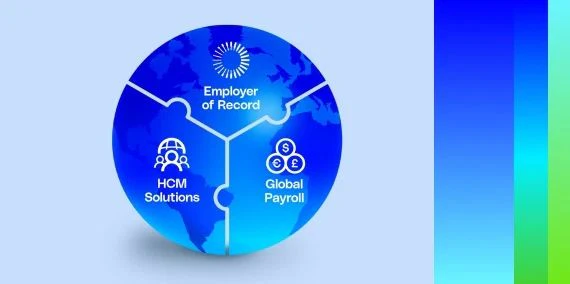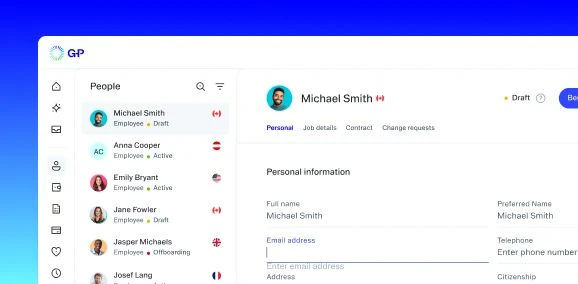Compensation and benefits are arguably the two most critical areas when it comes to employment matters, because it is necessary to meet or exceed the statutory minimums if a company wants to bring in the best talent. Plus, if a company is found to be noncompliant, it could face fines or even a company shutdown.
Peru compensation laws
In 2023, Peru’s compensation laws outlined a minimum wage of PEN 1,025.00 per month. Employees are allowed to work a maximum of 6 days per week at either 8 hours per day or 48 hours per week. Employers must provide a minimum 45-minute lunch break.
If employees work over these hours, they could be subject to overtime. The first 2 hours of overtime must be at least 25% of the employee’s total remuneration. For every hour afterward, the surcharge cannot be less than 35% an hour.
Guaranteed bonuses are another part of Peru’s compensation laws. Employees generally get 2 bonuses — one in July and one in December — that equal 1 month of salary.
One bonus unique to Peru is the Compensation for Length of Service (CTS). This benefit usually equals 1.16 of an employee’s monthly salary. Employers typically pay half in May and half in November. Employers with more than 20 employees must share profits among those employees.
Guaranteed benefits in Peru
As part of Peru benefits management plan, a company needs to give guaranteed benefits to all employees. They should start by determining the amount of paid time off to provide. Peru has 15 national holidays, but employees receive 16 paid days off for these holidays since Peru’s Independence Day is a 2-day holiday. Employees typically get 1 month (30 calendar days) of paid leave each year.
Employers must provide parental leave based on the statutory minimums. Pregnant employees receive 14 total weeks (98 days) of paid leave, during which time they can take 7 weeks (49 days) off before birth and 7 weeks (49 days) after. Spouses of pregnant employees get 10 consecutive days of leave.
Peru benefits management
It’s best to build in additional benefits into a benefits management solution. While the law may not require these benefits, employees may expect them. In Peru, employers often provide supplemental health insurance.
Restrictions for benefits and compensation
Although not common in Peru, trade unions or Collective Bargaining Agreements (CBAs) could stipulate different compensation or benefits.
Peru employee benefits plans
A competitive benefits program that meets market standards, complies with national labor laws, and meets employee needs can help companies attract and retain employees. If these critical factors are balanced well, the benefits strategy will work toward furthering business growth.
The employer has a legal and social responsibility to meet specific benefits requirements for its employees. Offering the required benefits will help ensure compliance with local laws, while any fringe benefits provided can help boost morale and foster a productive and engaged workforce.
Supplemental benefits can be offered in the form of:
- Employee assistance programs
- Private medical insurance offerings (locally known as EPS)
- Life assurance
- Employer-sponsored retirement savings
- Critical illness insurance
- Long-term disability income protection
Requirements for employee benefits in Peru
National labor laws require that an employer provides these mandatory benefits for all employees:
- 30 calendar days of paid vacation per worked year
- 2 annual bonuses, equal to a month’s salary, in July and December
- CTS
- Maternity leave
- Parental leave
- Monthly family allowance of PEN 102.50 (in 2023), for employees with under-age children, or until 24 if they are studying — the amount is the same regardless of the number of children
- Employee profit sharing when applicable
How to design an employee benefits program
While every country has a unique set of benefits requirements and expectations, the fundamentals of creating a successful plan will remain the same. Companies should keep some best practices in mind as they design a plan for hiring employees in Peru.
1. Determine company goals and budget.
To effectively determine the scope of a benefits program, it is necessary to know company-wide priorities and available resources. Employer should discuss requirements with stakeholders, evaluate yearly spending allocations, and identify opportunities for business growth.
2. Complete a needs assessment.
Employer should identify the top considerations of regional employees with a comprehensive needs assessment, and consider sending out questionnaires on key benefits issues or sitting down to interview some local employees.
3. Create an employee compensation and benefits plan.
After evaluating key benefits requirements and gathering data on market standards, companies can use their research to develop a custom benefits plan. When calculating total expenses, employee contributions, cost containment features, and any outsourcing requirements should be included in the budget.
Average cost of benefits per employee
Companies’ administration and benefits expenses will depend primarily on how the benefits program is organized. Because benefits plans can vary so widely, the average cost countrywide may not be a helpful metric. Instead, companies should focus on the budget.
It’s also important that businesses are developing a competitive plan that is sustainable long term. They should leave room for growth as the company continues to develop globally by setting a percentage of revenue to support the benefits program. This number will scale with company growth.
How to calculate employee benefits
National labor laws stipulate calculation rates for several key benefits:
- CTS: Set aside a secured sum each year to equal approximately a monthly salary in case of employment termination.
- Family assistance: Employees with 1 or more children under 18, or until 24 if they are studying, are eligible for an additional monthly payment of PEN 102.50 (in 2023), equivalent to 10% of a month’s minimum wage.
- Employee profit sharing: Companies with over 20 employees are responsible for sharing 8% to 10% of annual earnings before taxes with employees. The appropriate rates depend on the industry.
To calculate the rates of supplemental benefits, employers should complete local market research to identify industry standards and competitive offerings.
How are employee benefits taxed in Peru?
Employers must pay a contribution of 9% of employee income for public health system services. Other supplemental benefits may be taxable, but employee profit-sharing contributions are deductible as a tax expense. The employer must withhold eligible taxes on a Pay As You Earn (PAYE) basis.
Employee health benefits plans
The state-sponsored public health service (EsSalud) is compulsory for all employees and provides health insurance coverage. However, the employer may also elect to provide private health insurance plans with EPS Pacifico to supplement employees’ coverage.
Partner with G-P to build your everywhere workforce.
As your partner in global expansion, G-P will handle payroll and compliance, so you can focus on growing your team and scaling your business. Our market-leading Global Growth Platform™ is powered by the first fully customizable suite of global employment products and backed by the industry’s largest team of in-country HR and legal experts to streamline payroll management and help you offer competitive, compliant local benefits.
Learn more about our platform and request a proposal today.

















